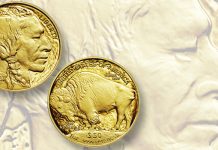An unleashing of means: never has luxury gone to such trouble as in May, June and July 2022 to impress. After a two-year forced break due to Covid-19, fashion brands have multiplied events in Europe and the United States, with Asia still remaining inaccessible. Vuitton organized a parade in a brutalist building in San Diego (California), Balenciaga took over the New York Stock Exchange, Dior paraded in Seville, Dolce
On Friday July 15, the French brand gathered some 200 guests – journalists, influencers and clients – in Marrakech for its spring-summer 2023 men’s show. For three years, artistic director Anthony Vaccarello has presented his summer men’s collection abroad, outside fashion week calendar. “I had never made a man before coming to Saint Laurent and I didn’t feel comfortable in Paris. Getting away from where I live gave me courage. It has become a habit to get away once a year, to take people out of the Parisian fashion shows,” explains the designer. Before the Agafay desert, he wandered his world on a beach in Malibu (California) in 2019, then in an abandoned cloister in Venice in 2021. Marrakech is a logical destination for the brand: after discovering the city in 1966, the founder Yves Saint Laurent settled there for part of the year to escape the hustle and bustle of Paris. Today, Saint Laurent has a museum and a foundation there.
Unlike other houses where the place and the collection are intimately linked – in Seville, for example, Dior worked with local craftsmen to develop a resolutely Andalusian wardrobe – Saint Laurent allows itself more freedom: “This are not looks for the desert,” Vaccarello warns. The collection is an extension of the one presented at Paris women’s fashion week in March 2022, all in coats and evening jackets worn next to the skin, or on a light silk dress like a nightie. A program that may seem surprising for a summer men’s collection, but that Anthony Vaccarello masters with skill.
Make opposites coexist
Some of the women’s looks are taken over as they are, like the inaugural tuxedo, entirely black, or a long coat with a wide build. Others are slightly reworked, an ivory dress becomes fluid satin trousers, blouses with lavallière are lengthened. Low-cut wraps in velvet or jersey, tunics worn over trousers, heeled boots or even pumps complete this wardrobe filled with borrowings from the feminine register, but which, by its sobriety, remains largely masculine.
The color palette is limited to black, sand and ivory. There are no jewels, few accessories apart from a few pockets, very graphic. Vaccarello does not seek to achieve genre fluidity with versatile pieces, but rather to make opposites coexist. These elegant, slender silhouettes are reminiscent of those of Yves Saint Laurent, open shirt and belted high-waisted trousers, strolling Jemaa el-Fna square, and of his muse, Betty Catroux, imperial in her evening tuxedos. “It’s a return to classic chic, a man without aggressiveness, who does not try to convey a message and assumes who he is”, summarizes Anthony Vaccarello, who specifies that it is his “favorite collection”.
If sobriety is required for the clothes, it is not the same for the installation of the parade which reserves surprises. In the middle of the Agafay desert, Saint Laurent dug a vast circular pool of water around which the models circulate. Once the last silhouettes have passed, a monumental and luminous ring emerges from the oasis and rises vertically. “I wanted a door that opened up to a new world,” says Vaccarello, who called on English artist Es Devlin to bring his vision to fruition. Despite the means deployed, the Kering group, which owns Saint Laurent, claims that this parade achieves carbon neutrality: the equipment is rented, reused, recycled or donated to local associations; the water from the oasis (not drinkable) is intended to irrigate the olive trees in the Agafay region. In 2022, luxury has never been so extravagant, nor so aware of the consequences of its actions.














